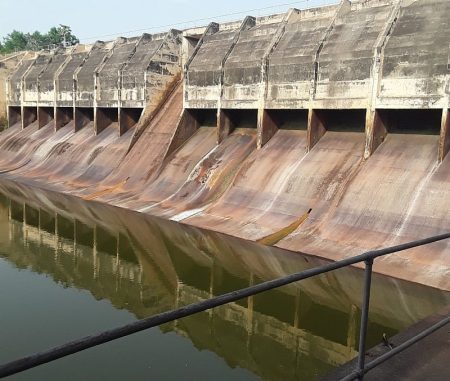The 2025 Dujiangyan Water-Releasing Festival, a vibrant celebration of an ancient irrigation marvel, unfolded in Dujiangyan City, Sichuan Province, China, attracting a multitude of visitors from across the globe. This annual event, steeped in tradition and cultural significance, commemorates Li Bing, the visionary governor of the Shu state (ancient Sichuan) during the Qin Dynasty, who spearheaded the construction of the Dujiangyan Irrigation System in 256 BC. Beyond its historical importance, the festival served as a platform to showcase the sustainable irrigation practices of the Dujiangyan system, offering potential solutions for addressing food insecurity, improving agricultural productivity, and mitigating flood risks, particularly relevant for regions like Africa facing similar challenges. The festival blended cultural performances, tourism displays, and the promotion of local products, offering a rich and immersive experience for attendees.
The Dujiangyan Irrigation System, a testament to ancient Chinese engineering ingenuity, continues to function effectively over two millennia after its creation. Initially designed to manage the volatile waters of the Min River and protect the Chengdu Plain from devastating floods, the system also provides life-giving irrigation to vast tracts of farmland. This ingenious system, comprised of three key components – the Fish Mouth intake, the Flying Sands Spillway, and the Precious Bottle Neck channel – harmoniously regulates water flow, diverting a portion for irrigation while effectively managing floodwaters. Its enduring legacy lies in its ability to transform the Chengdu Plain into a “land of abundance,” ensuring agricultural prosperity and safeguarding communities from natural disasters.
The festival provided an opportunity to highlight the system’s remarkable achievements. It currently irrigates approximately 770,000 hectares of farmland across eight cities and 41 counties in Sichuan Province, a testament to its enduring effectiveness. Recognized for its global significance, the Dujiangyan Irrigation System was inscribed on the UNESCO World Heritage List in 2000, further solidifying its status as a remarkable feat of human ingenuity and sustainable water management. The local authorities are also striving for further recognition by applying to include the Water-Releasing Festival itself on UNESCO’s Intangible Cultural Heritage List. This would acknowledge the cultural richness of the festival and the deep-rooted traditions associated with the irrigation system.
The 2025 festival also emphasized the potential for sharing the knowledge and principles behind the Dujiangyan Irrigation System with other regions facing water management challenges, notably in Africa. The continent struggles with food insecurity, low agricultural productivity, and the devastating impacts of floods and droughts. The Dujiangyan system, with its proven track record of sustainable water management, offers a valuable model that could be adapted and implemented to address these pressing issues. By showcasing the system’s functionality and its contribution to regional prosperity, the festival aimed to inspire international collaboration and knowledge sharing to promote sustainable development practices worldwide.
Mr. Jiang Weiwei, Deputy Secretary of the CPC Dujiangyan Municipal Party Committee, underscored the significance of the festival and the irrigation system. He expressed his gratitude for the international attention the event attracted, recognizing its role in promoting cultural exchange and highlighting the beauty of Chengdu and the surrounding region. He emphasized the historical importance of the festival and its connection to Li Bing, whose vision and engineering prowess transformed the region. Mr. Jiang also pointed out the continuing impact of the Dujiangyan Irrigation System, highlighting its role in ensuring agricultural productivity, flood control, and overall prosperity for the region.
The Dujiangyan Water-Releasing Festival stands not only as a celebration of a historical achievement but also as a testament to the enduring power of human ingenuity to harness nature for the benefit of society. The festival provided a platform to share the knowledge and principles behind this ancient irrigation marvel, offering potential solutions for contemporary water management challenges globally. The event reinforced the importance of preserving cultural heritage and promoting sustainable practices to ensure food security and environmental resilience for future generations. The aspiration to include the festival on UNESCO’s Intangible Cultural Heritage List further underscores its cultural and historical significance.














